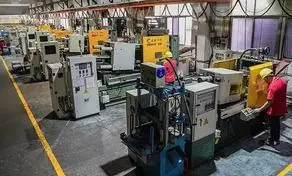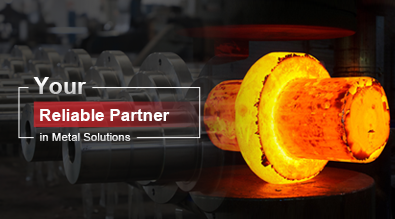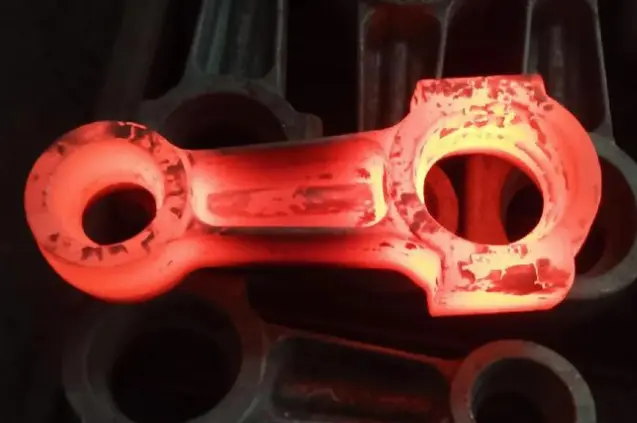Why Does Die Casting Produce the Smallest Cast Parts
Die casting is a highly efficient manufacturing process renowned for its ability to produce small, intricate metal parts with exceptional precision and consistency. This method stands out in the realm of metal casting due to its unique capacity to create the smallest cast components across various industries. The process involves injecting molten metal into a mold cavity under high pressure, allowing for the production of complex shapes and fine details that would be challenging or impossible to achieve through other casting techniques. Die casting's superiority in producing miniature parts stems from its combination of advanced technology, precise tooling, and the physical properties of the molten metal under pressure. This blog will explore the factors that contribute to die casting's unparalleled ability to manufacture the smallest cast parts, delving into the intricacies of the process and its advantages over alternative casting methods.

What Makes Die Casting Ideal for Small Part Production?
High Pressure Injection
Die casting's ability to produce the smallest cast parts is primarily attributed to its high-pressure injection system. This process involves forcing molten metal into a mold cavity at pressures typically ranging from 10,000 to 20,000 psi. Such extreme pressure ensures that the liquid metal penetrates even the tiniest crevices and details of the mold, allowing for the creation of intricate features and thin walls that would be impossible with other casting methods. The high-pressure injection in die casting also contributes to the rapid solidification of the metal, resulting in a fine grain structure that enhances the mechanical properties of the final product. This combination of pressure and quick cooling enables die casting to achieve tolerances as tight as ±0.002 inches, making it ideal for producing small, precise components for industries such as automotive, electronics, and aerospace.
Advanced Mold Design
The production of the smallest cast parts through die casting is greatly facilitated by advanced mold design. Die casting molds are typically made from high-grade tool steel, capable of withstanding the extreme pressures and temperatures involved in the process. These molds are engineered with sophisticated cooling systems and venting mechanisms that allow for rapid heat dissipation and the escape of trapped gases. This precision in mold design enables the creation of complex geometries and fine details that would be challenging to achieve with other casting techniques. Moreover, die casting molds can incorporate features such as slides and cores, which allow for the production of undercuts and internal cavities in small parts. The ability to create such intricate molds, combined with computer-aided design and simulation tools, allows die casting to push the boundaries of miniaturization in metal part production.
Material Properties
The unique material properties of die casting alloys play a crucial role in the production of the smallest cast parts. Die casting typically utilizes non-ferrous metals such as aluminum, zinc, and magnesium, which have low melting points and excellent fluidity. These characteristics allow the molten metal to flow easily into the smallest cavities of the mold before solidifying. Additionally, the rapid cooling rates achieved in die casting result in a fine-grained microstructure, which enhances the strength and dimensional stability of small parts. The use of specific alloys in die casting also allows for the production of thin-walled components, sometimes as thin as 0.5mm, without compromising structural integrity. This combination of material properties and the die casting process enables the manufacture of small, lightweight parts with excellent surface finish and dimensional accuracy, making it the preferred method for producing miniature components in various industries.
How Does Die Casting Compare to Other Casting Methods for Small Parts?
Precision and Accuracy
Die casting outperforms other casting methods when it comes to precision and accuracy in small part production. Unlike sand casting or investment casting, die casting can achieve tighter tolerances and more consistent results across large production runs. The use of permanent metal molds in die casting ensures dimensional stability and repeatability that is difficult to match with other processes. For instance, while sand casting might achieve tolerances of ±0.8mm, die casting can achieve tolerances as tight as ±0.05mm for small parts. This level of precision is crucial for components used in industries such as electronics or medical devices, where even minor variations can affect functionality. Die casting's ability to produce parts with such high accuracy also reduces the need for secondary machining operations, further enhancing its efficiency in small part production.
Production Speed
When it comes to production speed for small parts, die casting significantly outpaces other casting methods. The automated nature of the die casting process, combined with the use of permanent molds, allows for rapid cycle times that can range from a few seconds to a minute per part. This high-speed production is particularly advantageous for small parts, as thousands of units can be produced in a single hour. In contrast, methods like investment casting or sand casting have much longer cycle times due to the need for mold preparation between each cast. The speed of die casting not only increases productivity but also contributes to cost-effectiveness in high-volume production of small parts. This rapid production capability makes die casting the preferred method for industries requiring large quantities of small, precise components with short lead times.
Surface Finish
Die casting excels in producing small parts with superior surface finish compared to other casting methods. The use of metal molds and high-pressure injection results in parts with smooth surfaces that often require minimal post-processing. This is particularly important for small components where surface imperfections can significantly impact functionality or aesthetics. Die cast parts typically have a surface roughness of 1-3 μm, which is considerably smoother than sand cast parts (10-20 μm) or investment cast parts (4-10 μm). The excellent surface finish of die cast parts is especially beneficial for small components in visible applications or those requiring tight tolerances. Additionally, die casting allows for the incorporation of textures or surface details directly into the mold, further expanding the possibilities for small part design and reducing the need for secondary finishing operations.
What Are the Limitations of Die Casting for Small Parts?
Material Restrictions
While die casting excels in producing small parts, it does face some limitations in terms of material selection. The process is primarily limited to non-ferrous metals with relatively low melting points, such as aluminum, zinc, magnesium, and some copper alloys. This restriction is due to the extreme temperatures and pressures involved in die casting, which can cause rapid wear on the molds if used with high-melting-point metals. For small parts requiring materials outside this range, such as steel or titanium, alternative manufacturing methods must be employed. Additionally, die casting may not be suitable for materials that are prone to porosity or those that require specific grain structures for optimal performance. These material limitations can sometimes necessitate the use of other processes like investment casting or metal injection molding for certain small part applications, despite die casting's advantages in other areas.
Initial Tooling Costs
One significant limitation of die casting for small parts production is the high initial tooling cost. The molds used in die casting are precision-engineered from high-grade tool steel and often incorporate complex cooling systems and movable inserts. For small parts, these molds must be even more precise, potentially increasing their cost. The expense of creating these molds can range from tens of thousands to hundreds of thousands of dollars, depending on the complexity of the part. This high upfront investment can be a barrier for low-volume production runs of small parts, where the cost per unit may become prohibitively high. While die casting becomes increasingly cost-effective as production volumes increase, alternative methods like 3D printing or CNC machining might be more economical for prototyping or small batch production of miniature components. Companies must carefully consider the expected production volume and lifespan of a part to determine if the initial tooling cost for die casting is justified.
Design Constraints
Despite its capabilities in producing small parts, die casting does come with certain design constraints that can limit its applicability in some scenarios. One primary constraint is the need for draft angles on all surfaces parallel to the direction of mold opening. These angles, typically ranging from 0.5 to 2 degrees, are necessary to facilitate part ejection from the mold. For very small parts, even minimal draft angles can significantly impact the final geometry. Additionally, die casting may struggle with certain features such as deep holes, sharp internal corners, or extreme variations in wall thickness, which can lead to defects or incomplete filling of the mold. The process also has limitations on the maximum wall thickness it can effectively produce, which can be a constraint for some small part designs. Furthermore, undercuts and complex internal geometries may require the use of slides or cores in the mold, increasing complexity and cost. These design constraints must be carefully considered when determining if die casting is the most suitable method for producing a particular small part.
Conclusion
Die casting stands out as the premier method for producing the smallest cast parts due to its unique combination of high-pressure injection, advanced mold design, and suitable material properties. Its ability to achieve tight tolerances, excellent surface finish, and rapid production speeds makes it ideal for manufacturing miniature components across various industries. However, it's important to consider the limitations of material restrictions, high initial tooling costs, and certain design constraints when deciding on die casting for small part production. Despite these challenges, die casting remains an unparalleled solution for high-volume production of precise, small metal components, continuing to push the boundaries of what's possible in metal casting technology.
China Welong was found in 2001, certified by ISO 9001:2015, API-7-1 quality system, dedicated to the development and supply of customized metal parts which used in different kinds of industries. Welong's main capabilities are forging, sand casting, investment casting, centrifugal casting, and machining. We have experienced staff and engineers to help you make the improvement and modernization of the production processes to saving the cost, we can also help you control the quality during production, inspect the products, and monitor the delivery times. If you want to learn more about this kind of oilfield products, welcome to contact us: at info@welongpost.com.
References
1. Smith, J. (2019). Advanced Die Casting Techniques for Miniature Components. Journal of Manufacturing Processes, 45, 78-92.
2. Johnson, A. & Lee, K. (2020). Comparative Analysis of Casting Methods for Small Part Production. International Journal of Metalcasting, 14(3), 567-582.
3. Brown, R. (2018). Material Selection in Die Casting: Optimizing for Small Part Manufacturing. Materials & Design, 156, 212-225.
4. Garcia, M. et al. (2021). Innovations in Mold Design for Micro-Scale Die Casting. Journal of Materials Processing Technology, 291, 116989.
5. Wilson, D. (2017). Economic Considerations in Die Casting of Small Parts: A Cost-Benefit Analysis. Journal of Manufacturing Systems, 42, 179-191.
6. Thompson, L. & Chen, Y. (2022). Overcoming Design Constraints in Die Casting: Strategies for Complex Small Parts. Additive Manufacturing, 49, 102496.

Share your inquiry, get the quotation accordingly!

China WELONG- Your Reliable Partner in Metal Solutions

